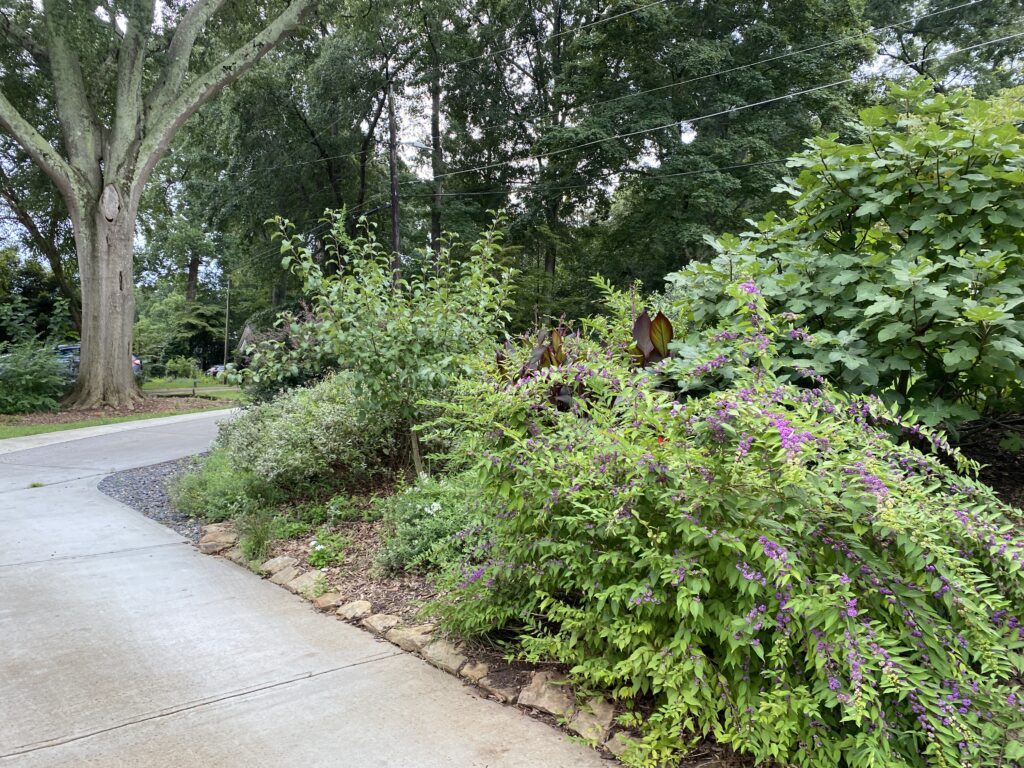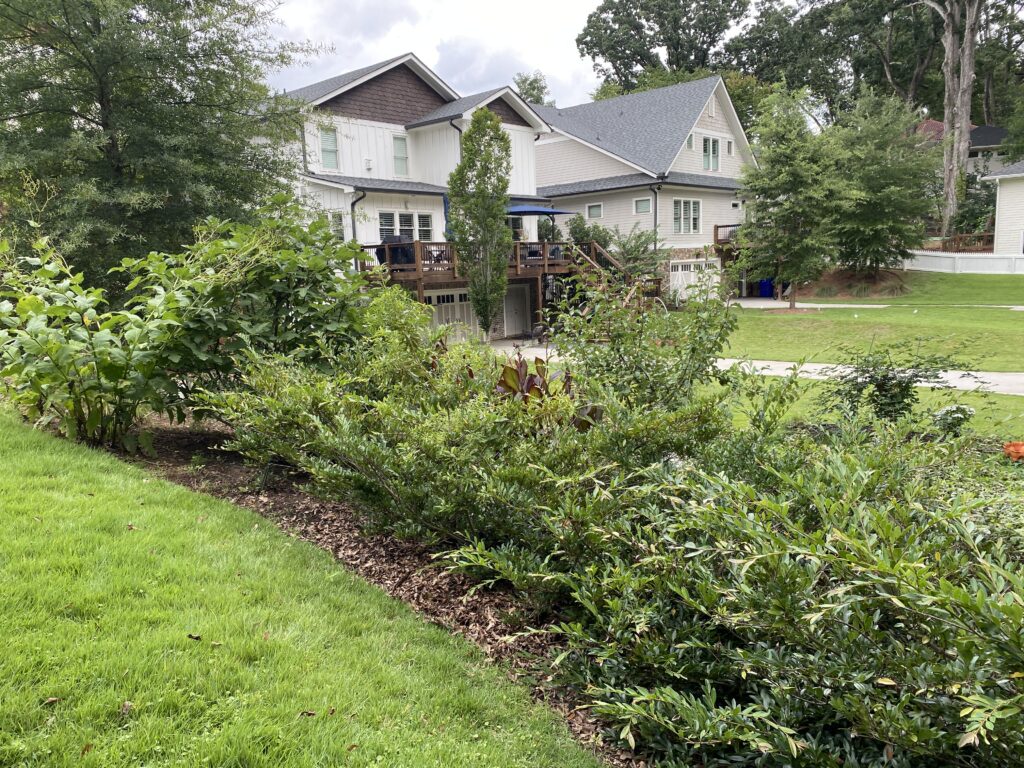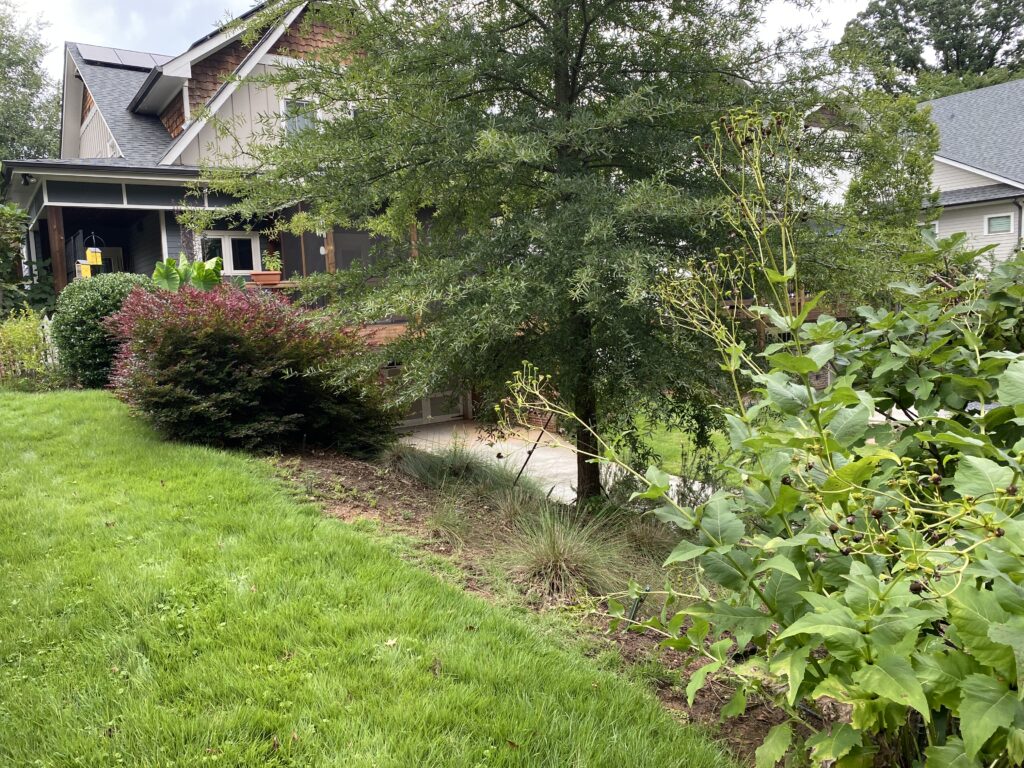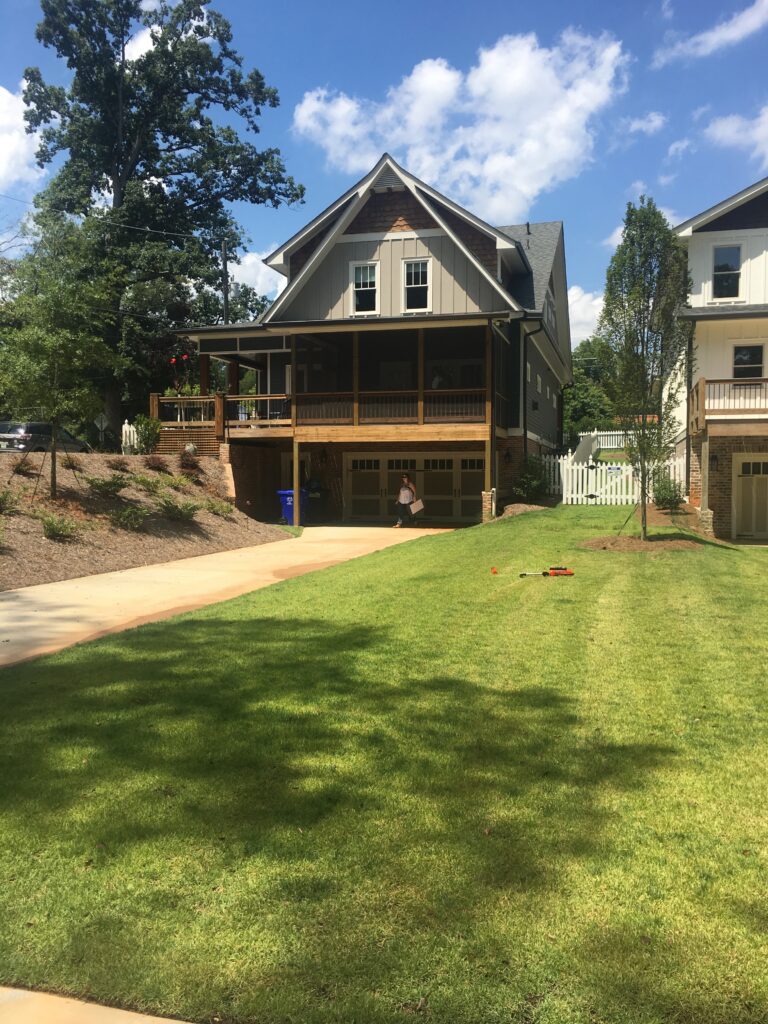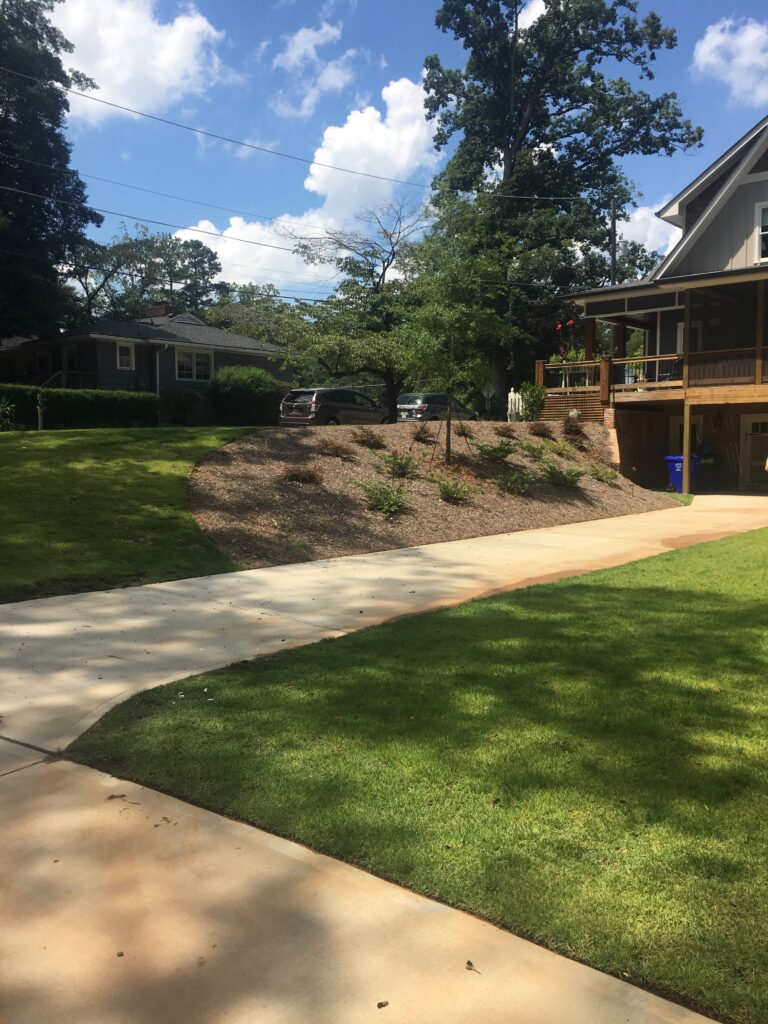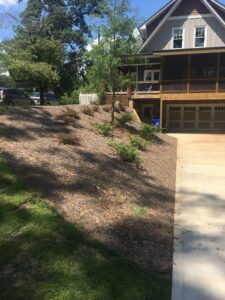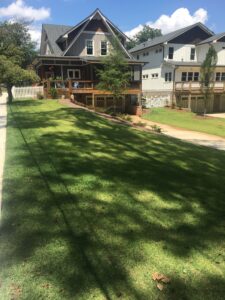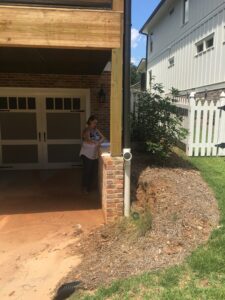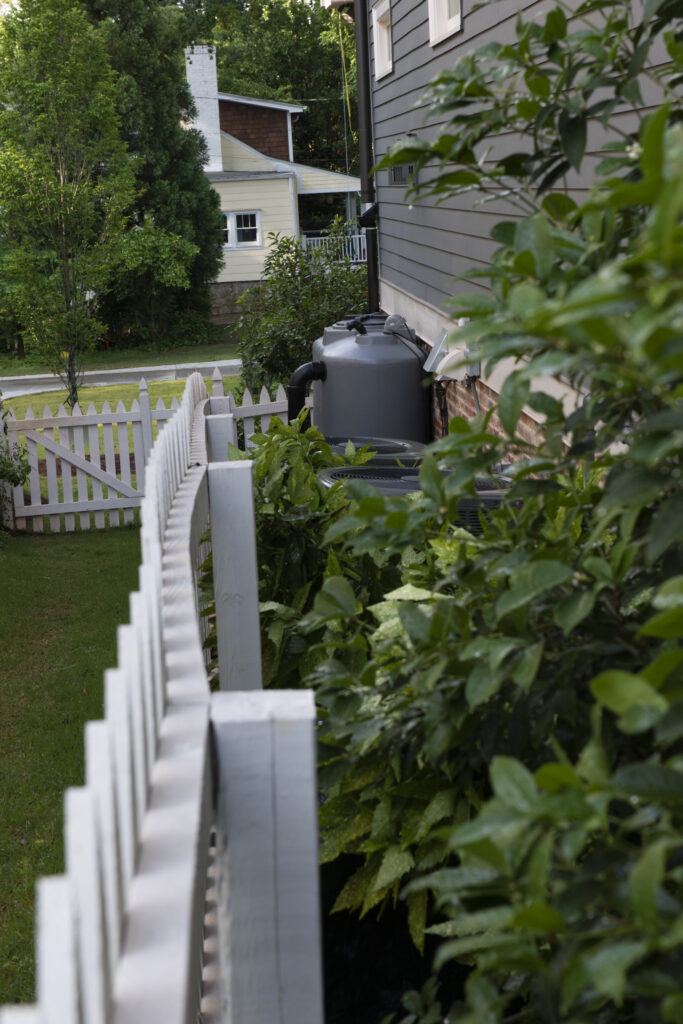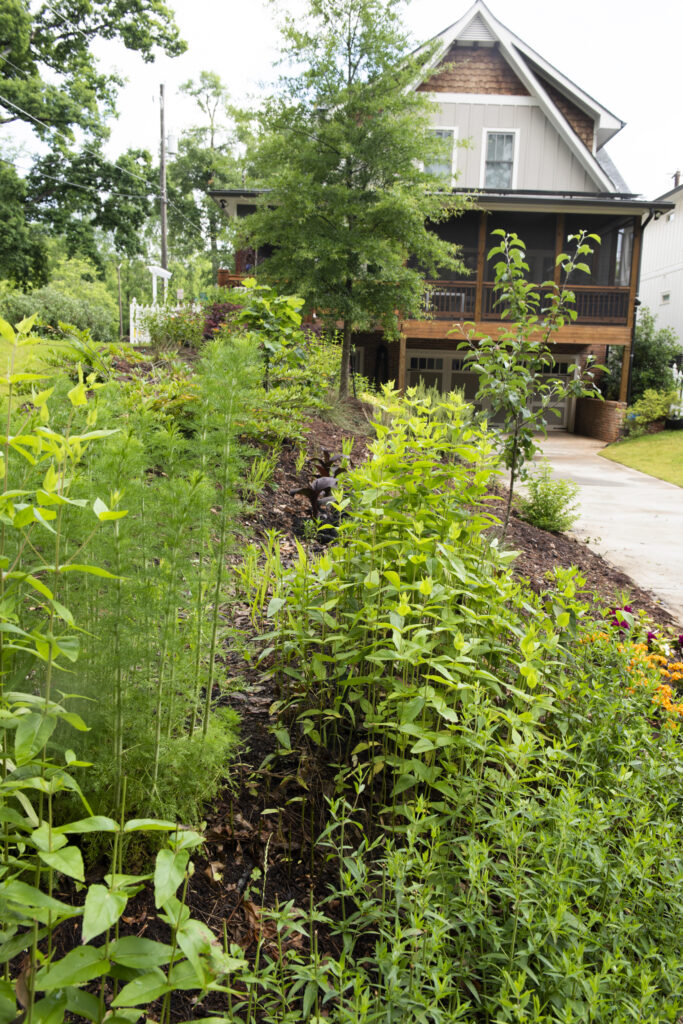This landscape was ready for transformation—eager to become more resilient through native and beneficial plants that build soil fertility, stabilize slopes, and bring joy to the family.
The primary goal was to create a productive landscape to grow food while shifting from a high-maintenance, input-heavy landscape to one that thrives with biodiversity, water management, and sustainable practices. The design aimed to address drainage issues by directing stormwater into functional raingardens and planting beds, infiltrating water into the soil to prevent erosion, and maximizing communal space for children and neighbors to enjoy.
One significant challenge with this property was poor drainage. Despite being newly built, the homeowner noticed severe washout and erosion in the front and back yards within a few months. The erosion was so severe that red Georgia clay collected along the driveway and flooded the garage in heavy rains, signaling the urgent need for intervention.
Additionally, the backyard’s microclimate received abundant direct sunlight. The client sought to break up the monoculture lawn, replacing it with fruit trees, berry shrubs, and pollinator habitats to enhance both productivity and ecological value.
Our team got to work. We tackled erosion by installing three raingardens to manage driveway runoff, tapping into five downspouts to capture rainwater from the roof, and setting up a rainwater collection tank, while also repurposing an oak barrel provided by the client. We also installed distribution lines to ensure proper water management, directing it to the right areas for infiltration and storage.
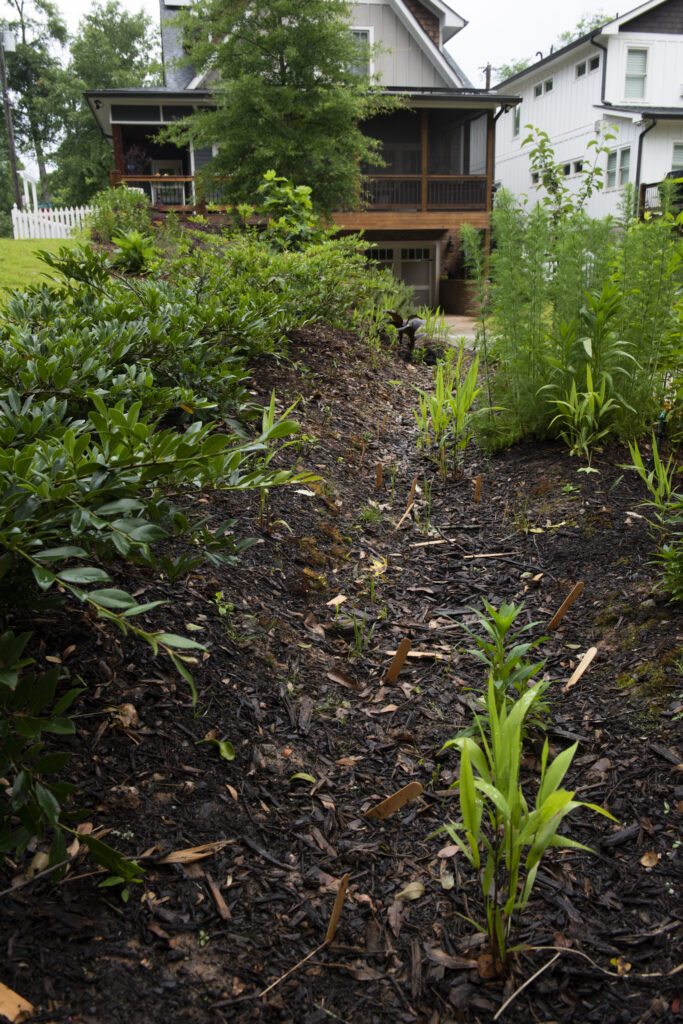
Hardscaping and earthworks included building a custom arbor along the home’s side, trained with native honeysuckle, installing a boulder retaining wall with repositioned plants, and creating a diversion bioswale. We also added edible privacy hedges, blending functionality with aesthetics.
Finally, our caretaking team planted an array of native and useful plants to rewild the landscape. The raingardens were filled with St. John’s Wort, river oats, and cardinal flowers, while existing shrubs and trees were relocated to spots where they could thrive. We added a pollinator nectary, three raised beds for edible perennials and annuals, and diverse plants like native honeysuckle, pineapple guava, butterfly milkweed, strawberries along the sidewalk, pomegranate, Black-eyed Susans, echinacea, beautyberry, and native grasses.
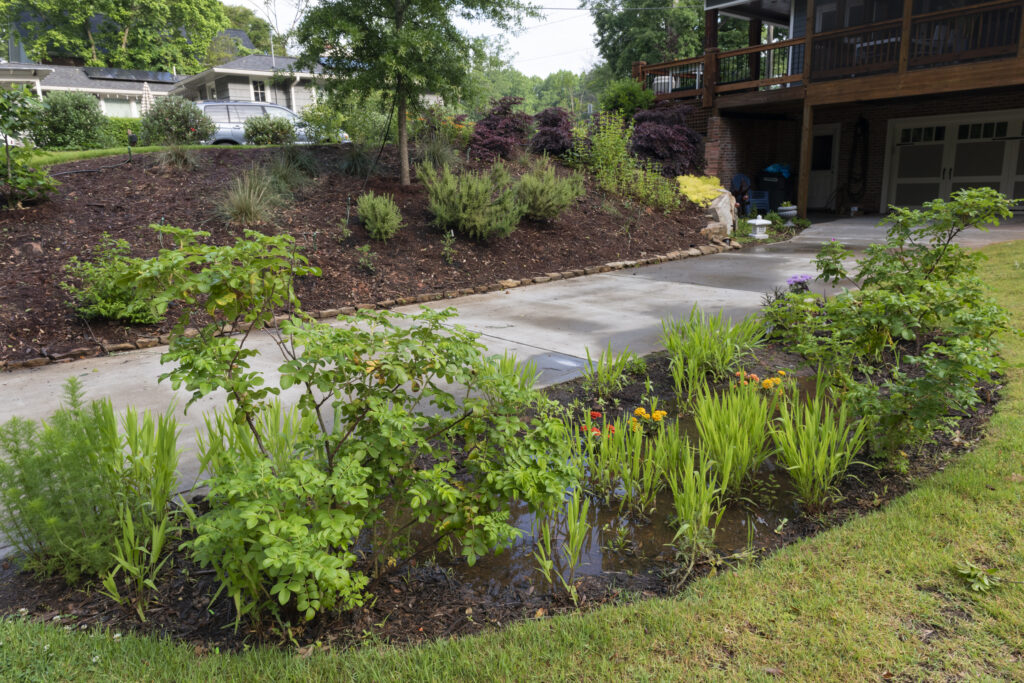
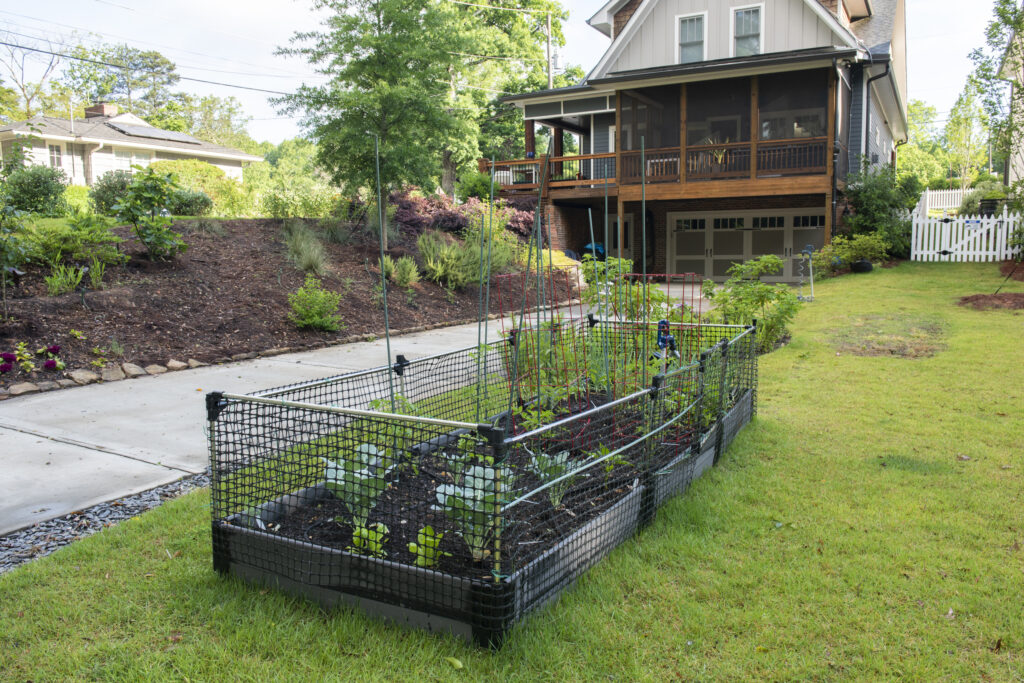
Altogether, our efforts resulted in the planting of 17 trees, 324 food-producing plants, and the restoration of 43,500 gallons of water to the local cycle annually.
